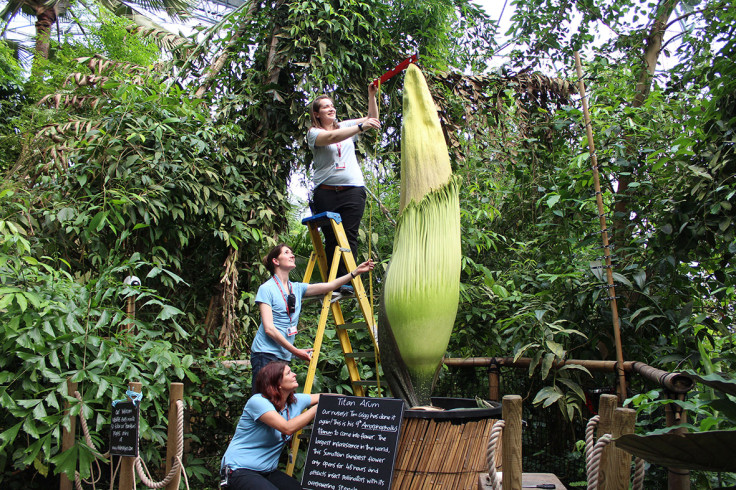Cambridge University garden raises a stink with rare blooming of giant Titan Arum flower

Visitors to the Cambridge University Botanic Garden this weekend were treated to the rare flowering of the world's "stinkiest" plant, the Titan Arum. The last time it flowered was in 2004.
The stink from the giant flower comes in pulses through the night and has been likened to "rotten eggs", "dead donkey", "dirty laundry" and "smelly feet".
The flower begins to wilt after two days of full bloom.
Professor Beverley Glover, director of the Botanic Garden, said during the weekend: "We are so excited by the spectacle and stink of a corpse flower from the Indonesian rainforests flowering in Cambridge that we will keep our Brookside Gate open until 10pm tonight and tomorrow night too so that as many people as possible can come and enjoy one of the true wonders of the plant world."
The creamy nose of the "flowering structure" first emerged on 6 July though the tuber from which it grows had not yet attained the normal flowering weight of 15kg.
Since then, the plant nicknamed Tiny, has been growing at a rate of around 10cm each day till the weekend when staff announced the flower was fully open.
The titan arum (botanical name - Amorphophallus titanum) produces one of the largest single flowering structures in the world.
But in reality it is not a giant flower but an inflorescence, or clustering of flowers on a stem.
The central, spike-like spadix is surrounded by a funnel-shaped spathe, which is a highly modified leaf that forms a protective chamber for thousands of actual flowers.
The plant is at its stinkiest at night when chemical reactions generate temperatures of 40 deg C setting off the stench from the sulphurous compounds.
A native species of Sumatra, the plant's stench attracts pollinators who come looking for rotting meat.
Deforestation for logging and clearance for palm oil plantations in Indonesia have seen the plant species become rare and classified as "vulnerable" to extinction.
The Glasshouse Range at the Botanic Garden is kept at high humidity and a minimum temperature of 18°C to mimic rainforest conditions for the plant.
© Copyright IBTimes 2025. All rights reserved.





















